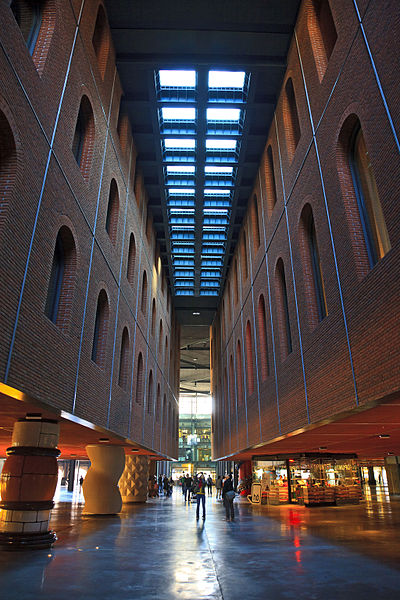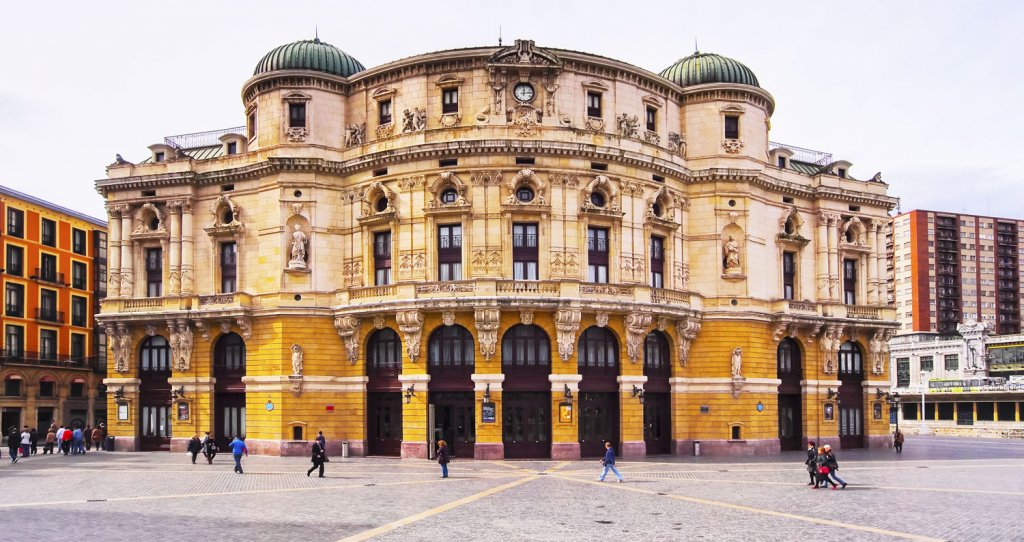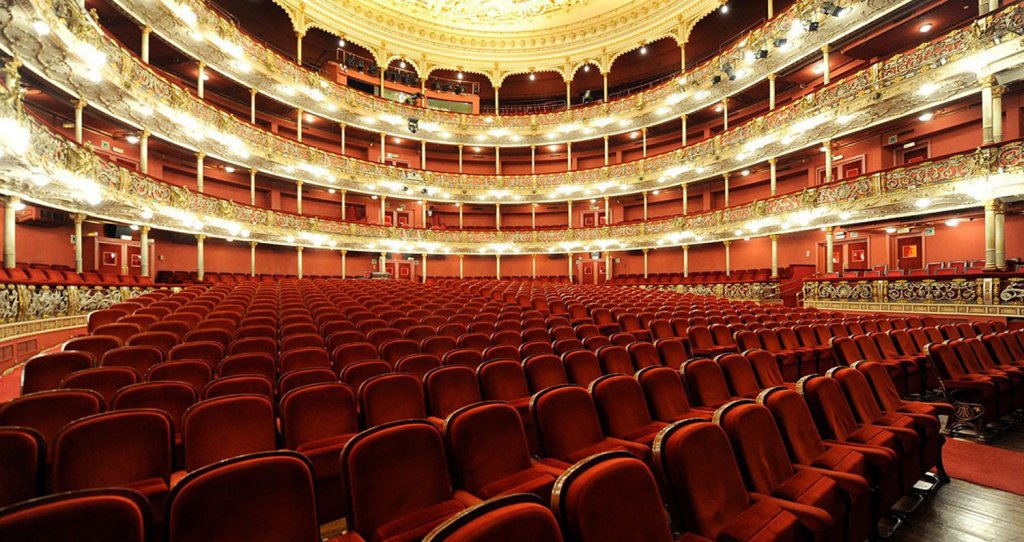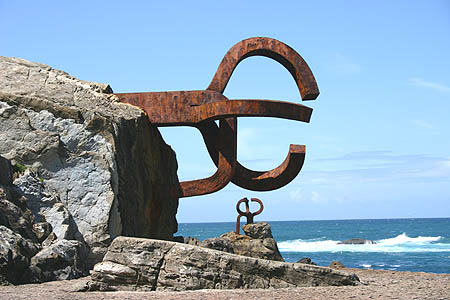Spain – Basque Country (Bilbao, San Sebastián, Vitoria) Sept 10, 2021
BILBAO
Monument to Evaristo de Churruca (1841-1917) was a Spanish engineer. He directed diverse construction work in Murcia and Biscay and subsequently was transferred to Puerto Rico, where he was in charge of the installation of the telegraphic network of the island and carried out a study for the improvement of the port of San Juan. Returning to Spain, he took charge of the works of the exterior Port of Bilbao and the canalization of the Nervion River.
A monument was erected to honour him in the town of Getxo at the mouth of the Nervion River, which he definitely straightened allowing the further development of Bilbao’s industrial power. Sitting in a lovely park near the mouth of the river, this is a large obelisk with the man sitting at the front. A large muscular guy strains against a huge rock held up by a supine man.
Molino de Aixerrota, Aixerrota. This lovely round stone windmill is attached to a restaurant sitting near cliffs. Below is one of the nicest public toilets in the world – metal, music, warm water.
Azkuna Zentroa is a multi-purpose venue in Bilbao that opened in 2010. The venue, labeled as a “Culture and Leisure Centre”, consists of a cinema multiplex, a fitness centre, a library, showrooms, an auditorium, shops, and a restaurant. In March 2015 its name was Iñaki Azkuna was a late mayor of Bilbao.
Originally a corn exchange was inaugurated in 1909. In the 1970s, it was abandoned until 1994 it was decided to renovate it and build this center.

Teatro Arriaga Antzokia is an opera house in Bilbao built in Neo-baroque style in 1890. It is named after Juan Crisóstomo de Arriaga, known in his time as the “Spanish Mozart”. The theatre was rebuilt in 1985 after severe flooding in August 1983 destroyed it. The interior can only be appreciated by theatre-goers or by visitors in guided tours. 

Mercado de la Ribera is a market square in Bilbao on the right bank of the Nervion River. Its built area of 10,000 square metres (110,000 sq ft) makes it the biggest covered market in Europe. Inside it, there are stalls that sell different products, mostly fresh produce. More than 60 merchants provide customers with produce: meat, fruit, shellfish, cheeses, cooked meats, frozen food, mushrooms and fungi.
It was recognized in 1990 as the most complete municipal food market by the Guinness Book of Records.
Faro de Santa Catalina, Lekeitio:. It was a monumental drive to this LH over many kms of slow windy road. The round stone LH sits on a small rocky outcrop below a restaurant. Views are panoramic.
SAN SEBASTIAN*
Peine de Viento (Haizearen Orrazia or The Comb of the Wind) is a collection of three sculptures by Eduardo Chillida arranged as an architectural work located at the western end of La Concha Bay, at the end of Ondarreta beach. It is made up of three of Chillida’s monumental steel sculptures, weighing 10 tons each, embedded in natural rocks rising from the Cantabrian Sea. The work was completed in 1976. In addition to the sculptures, a viewing area was created on the nearby coast that includes “blow-holes”,
Castillo de la Mota is a medieval fortress, located on an elevated hill, a mota (in Spanish), from where it dominates the town and surrounding land. The adjacent town came to be surrounded by an expanding series of walls in subsequent years, of which little remains.
The castle’s main feature is the large outer barbican. The interior castle has a trapezoidal plan, with 4 towers and a square yard. It has a large square keep tower, and an inner curtain wall that was used for archers. It is made from local red brick, utilizing stone only for some details.
Initial fortification of the village, repopulated after Moorish depredations, led to the creation of a fortress on the site in 1080. The village soon grew alongside it and this building was built in 1433.
Don Quijote y Sancho Panza. Inaugurated in 2005 in Cervantes Square, it commemorates the novel published in two parts (part 1, 1605, and part 2, 1615) by Spanish writer Miguel de Cervantes, one of the most widely read classics of Western literature. Originally conceived as a parody of the chivalric romances that had long been in literary vogue, it describes realistically what befalls an aging knight who, his head bemused by reading such romances, sets out on his old horse Rocinante, with his pragmatic squire, Sancho Panza, to seek adventure. Widely and immediately translated (first English translation 1612), the novel was a great and continuing success and is considered a prototype of the modern novel. Hotel Maria Cristina. In the NM Hospitality Legends series, this hotel was inaugurated in 1912 along with the nearby Victoria Eugenia Theater. Iis the main accommodation of the stars who go to the International Film Festival of San Sebastián. It was renovated between 1987 and 1988 when it also became a municipal property operated by The Luxury Collection from the Starwood Hotels chain.
Hotel Maria Cristina. In the NM Hospitality Legends series, this hotel was inaugurated in 1912 along with the nearby Victoria Eugenia Theater. Iis the main accommodation of the stars who go to the International Film Festival of San Sebastián. It was renovated between 1987 and 1988 when it also became a municipal property operated by The Luxury Collection from the Starwood Hotels chain.
San Sebastian was my last stop in Spain before continuing on to France.


